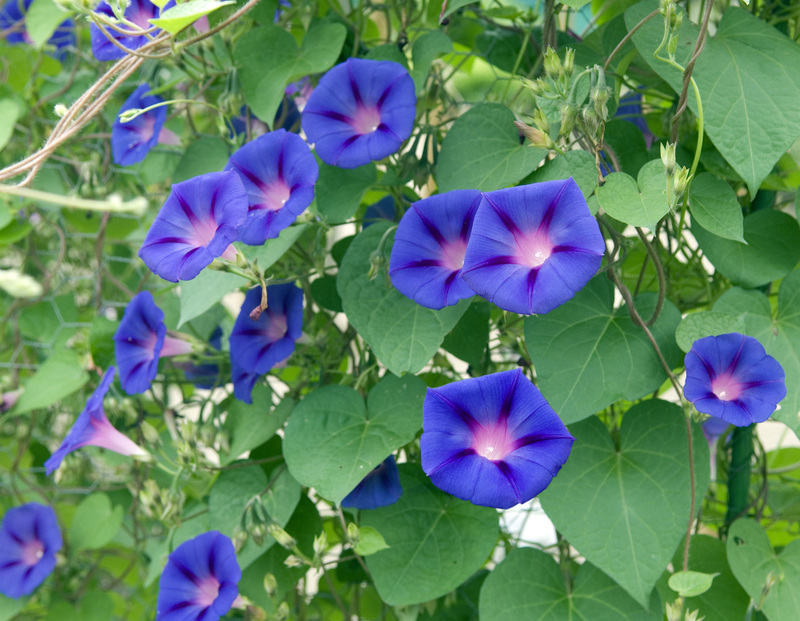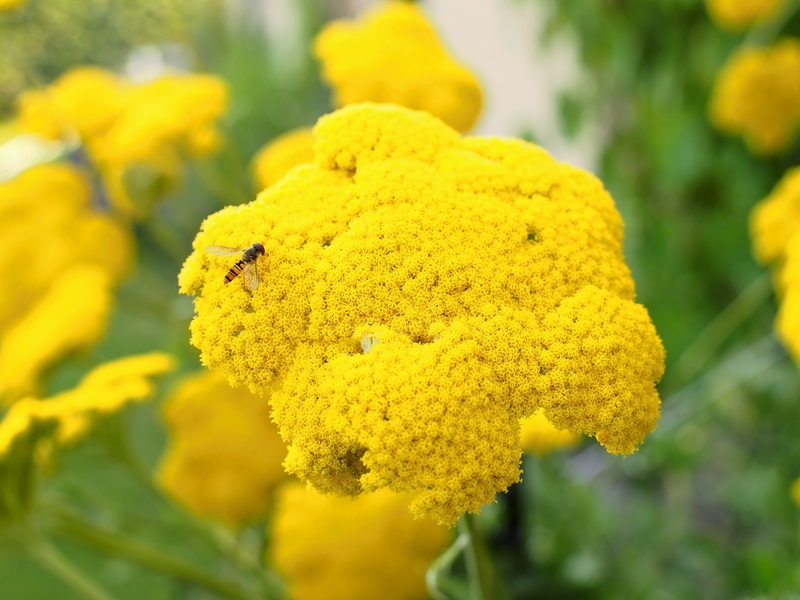The Intersection of Creativity and Hedge Trimming
Posted on 26/06/2025
The Intersection of Creativity and Hedge Trimming: Shaping Nature's Green Canvas
Hedge trimming is often seen as a straightforward garden maintenance task. For generations, it has been associated with ensuring neatness, boundary demarcation, and plant health. However, at the intersection of creativity and hedge trimming, a new realm of possibilities emerges. Here, the art of manipulating living plants transforms from mere upkeep into a dynamic expression of creative vision.
This comprehensive article delves into how imaginative approaches can completely redefine the aesthetics of garden boundaries, the benefits of nurturing creativity within this realm, and advanced techniques to inspire both beginners and experienced gardeners. Explore the world where creative hedge trimming meets landscaping art, uncovering inspiration, methods, and tips to bring your gardenscapes to life.

Understanding the Basics of Hedge Trimming
What Is Hedge Trimming?
Hedge trimming involves cutting back hedges--clusters of shrubs planted close together--to maintain a clean, organized appearance. Traditionally, it serves practical functions such as:
- Maintaining plant shape and growth
- Encouraging healthy new foliage
- Defining paths, borders, and privacy zones
- Controlling pests and diseases
Yet, with the right approach, hedge cutting becomes not only practical but a medium for personal expression and creative gardening.
Tools for Hedge Trimming
To unlock creativity, it's essential to start with the right equipment. Typical hedge trimming tools include:
- Manual hedge shears for precise control
- Electric or battery-powered hedge trimmers for larger areas
- Topiary frames and shaping guides for complex designs
- Pruning scissors for detail work
The Creative Potential: Reimagining Hedges
At the heart of the intersection between creativity and hedge trimming lies the philosophy that a hedge can be more than a green barrier--it can be an enduring living artwork.
The Evolution of Creative Hedge Trimming
While the roots of decorative horticulture trace back centuries, the most famous examples are seen in classic European gardens and Japanese landscape design. These traditions involve topiary art--the creative shaping of hedges and shrubs into intricate forms such as animals, shapes, or abstract sculptures. Today, professional landscapers and passionate hobbyists alike are reviving and evolving this craft, blending tradition with modern artistry.
Benefits of Creative Hedge Trimming
Transforming hedge trimming into a creative endeavor yields several benefits:
- Visual Appeal: Imaginative shapes catch the eye, turning ordinary yards into stunning landscapes.
- Personal Expression: Design choices reflect the gardener's personality and taste.
- Mental Health: The process can be soothing and meditative, fostering mindfulness.
- Biodiversity: Well-managed creative hedges can support varied wildlife by offering shelter and resources.
Popular Creative Hedge Trimming Styles
- Topiary: Clipping hedges into geometric, animal, or fantastical shapes.
- Wave and Ripple: Creating flowing patterns or undulations in the hedge line.
- Textured Edges: Combining flat-topped sections with spiked or feathery details for contrast.
- Layered Sculptures: Sculpting multiple levels or stacked shapes for depth and interest.
Design Principles at the Intersection of Hedge Trimming and Creativity
1. Form and Structure
Start with the natural growth pattern of your chosen hedge species. A strong understanding of the plant's tendencies helps in planning achievable shapes. Consider the visual weight, balance, and proportion of your design to ensure it complements the surrounding landscape.
2. Symmetry vs. Asymmetry
Symmetrical hedges project a sense of order and formality, ideal for structured gardens. Asymmetrical or abstract forms introduce energy and creativity, often used in more informal or modern spaces.
3. Contrast and Harmony
Pair tightly clipped hedges with looser, naturalistic planting, or juxtapose different species for textural contrast. Harmonize your creations with the overall garden theme for a cohesive effect.
4. Perspective and Scale
Consider where your work will be viewed from. Larger, bold shapes are better for long sight lines, while subtle details shine in smaller gardens or close-up settings.
Step-by-Step Guide: Bringing Creativity to the Hedge Trimming Process
1. Planning Your Design
- Walk your garden and visualize potential shapes or patterns.
- Sketch ideas on paper or use garden design software for complex undertakings.
- Choose inspiration from art, architecture, or nature--don't be afraid to dream.
2. Selecting the Right Hedge Species
Certain hedge plants respond better to creative trimming. Evergreens such as boxwood, yew, and privet are especially popular because of their dense, small leaves and ability to recover from frequent cuts.
- Boxwood: Excellent for topiary due to fine leaves and compact growth.
- Yew: Hardy and forgiving, easily trained into complex shapes.
- Privet: Fast-growing and accommodating of unique forms.
- Lonicera (Honeysuckle): Suitable for looser, flowing designs.
3. Establishing the Basic Shape
- Start with simple forms--spheres, cubes, or cones are easy for beginners.
- Use stakes and string as guides, or invest in topiary frames for intricate shapes.
Tip: Trim a little at a time, and step back frequently to check progress.
4. Adding Creative Details
- Incorporate voids, undulating lines, or fluted edges.
- Try layering, carving out windows, or shaping multiple plants together for larger figures.
- Experiment with themes--animals, symbols, or even abstract geometric art.
Advanced Techniques for Artistic Hedge Trimming
The Art of Topiary
Topiary is the ultimate convergence of creativity and hedge shaping skills. The key steps include:
- Designing the Frame: Use garden wire and mesh to construct a frame for ambitious figures.
- Guided Trimming: Let the hedge grow into the frame, then trim as the plant fills out the shape.
- Detail Work: Use hand shears for finishing touches, especially in tight spots.
- Patience: Some topiary can take years to mature to perfection, rewarding dedication with stunning results.
Wave Hedges and Living Fences
Bored by straight lines? Wave hedges involve carefully marking out sweeping curves or zig-zags. These dynamic lines add movement and direct the viewer's gaze across the landscape, creating a sense of depth and drama.
Integrating Color and Texture
- Variegated foliage or differently colored species can be combined in a single hedge for artistic effects.
- Floral hedges--flowering shrubs trimmed into shapes--bring seasonal color into creative designs.
- Textured contrast between fine-leaved and broad-leaved evergreens can be used to add richness to your living sculptures.
Inspiration from Around the World
Classical Gardens
European castles and manor houses offer generations of innovative hedge art. Think of the swirling parterres of Versailles or the fanciful animal shapes in English stately homes--proof that creativity in hedge trimming has deep roots.
Modern Artistic Movements
Contemporary landscape designers are embracing unusual and playful shapes. Maze gardens, abstract sculptures, and even messages spelled out in shrubbery show how the intersection of artistry and hedge trimming evolves with the times.
Japanese Niwaki and O-karikomi
Japan's approach is centered on harmony and the controlled illusion of natural beauty. Niwaki refers to cloud-pruned trees, while O-karikomi involves undulating mounds of tightly clipped shrubs, integrating garden design with spiritual aesthetics.
The Role of Technology in Creative Hedge Trimming
Innovative tools and software are empowering today's gardeners to push creative boundaries further than ever before.
- Laser-guided trimmers: Ensure perfect lines and symmetry in complex designs.
- Virtual reality planning tools: Help visualize different shapes and sizes before making physical changes.
- Automated shears with customizable guides: Reduce manual effort while achieving attention to detail.
These advances mean the creative possibilities in decorative hedge cutting are expanding, offering even amateurs the chance to pursue intricate designs.
Ecological and Environmental Considerations
Responsible creative hedge trimming must always balance artistry with care for the environment. Keep in mind:
- Trim outside bird nesting seasons and check for wildlife before cutting.
- Allow some sections to flower or fruit to provide for pollinators and birds.
- Choose native or adapted species for reduced water and chemical needs.
- Maintain healthy soil and consider composting clippings for sustainability.

Frequently Asked Questions: Creative Hedge Trimming
1. How often should creative hedge trimming be performed?
For most evergreens and popular hedge plants, 1-3 trims per year maintains both form and plant health. Frequent, gentle trimming encourages density and detail without stressing the plant.
2. Is creative hedge trimming suitable for beginners?
Absolutely! Start with simple geometric shapes or gentle waves. As skills improve, gradually move toward complex figures or detailed designs.
3. What should I do if I make a mistake?
Don't panic--plants are forgiving. Most hedges will recover from overzealous cuts with time and proper care. Use mistakes as learning opportunities for future creative endeavors.
Conclusion: Embrace Your Creativity with Hedge Trimming
At the intersection of creativity and hedge trimming, every garden becomes a blank canvas. Whether you're drawn to timeless topiary, bold modernist lines, or whimsical shapes, infusing imagination into hedge shaping opens up endless possibilities. With the right tools, techniques, and a willingness to experiment, your garden boundaries can become expressions of art, personality, and passion for nature.
Remember: A truly captivating landscape is not just tended--it is created. Dare to explore inventive hedge trimming and discover a rewarding synthesis of artistry and gardening in your own outdoor space.

